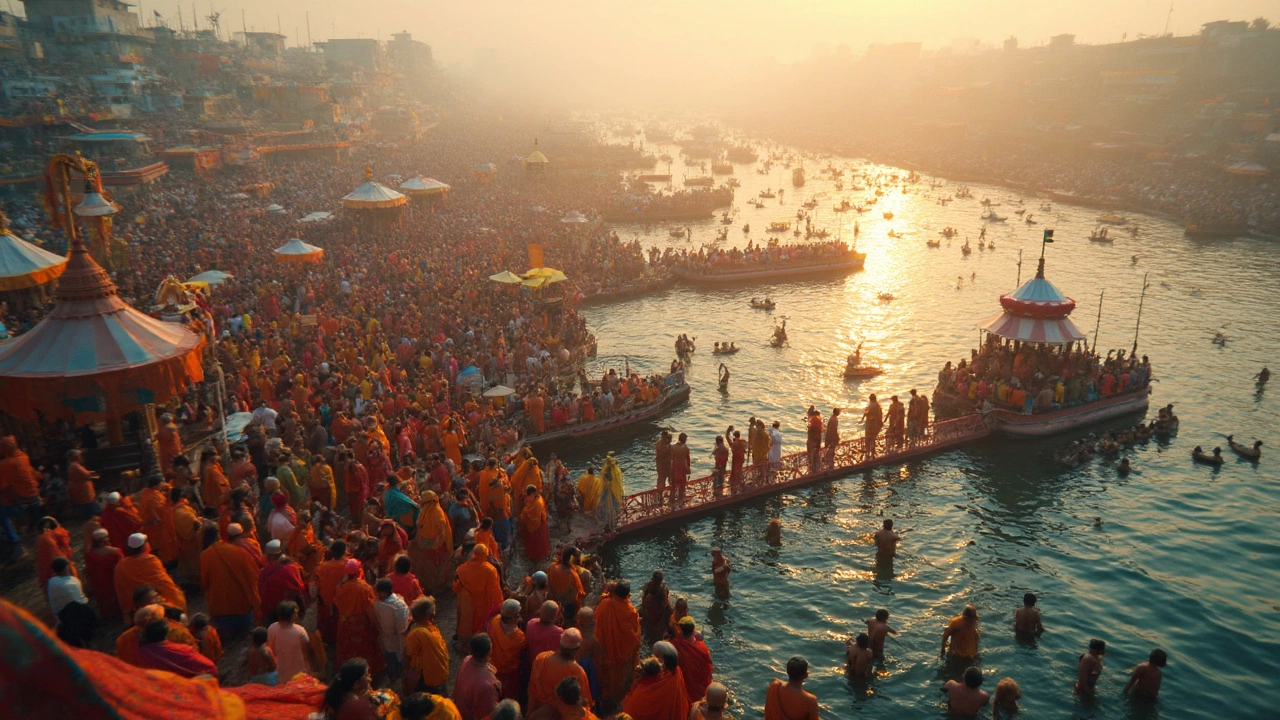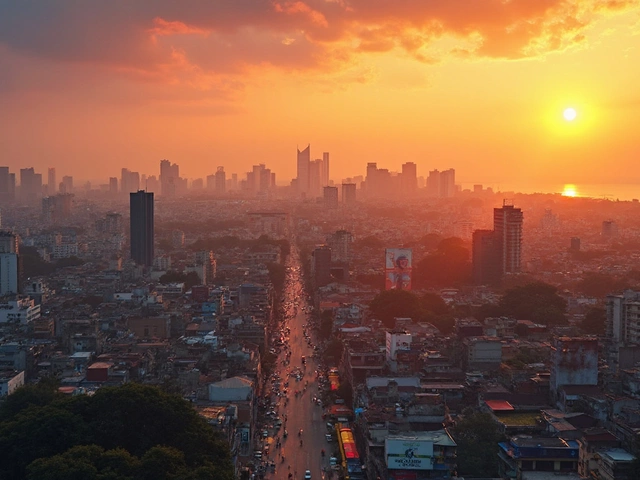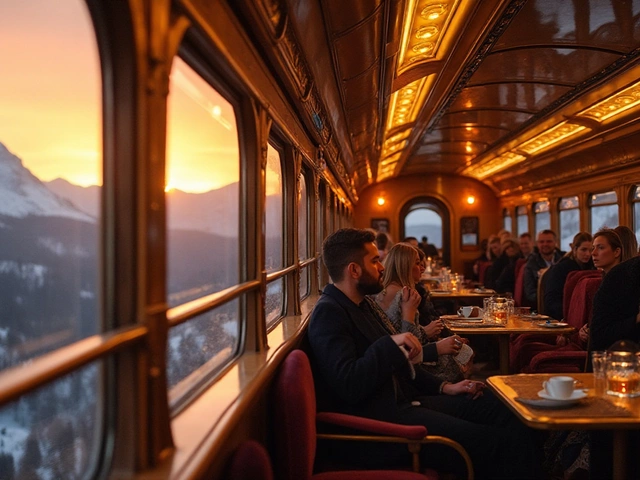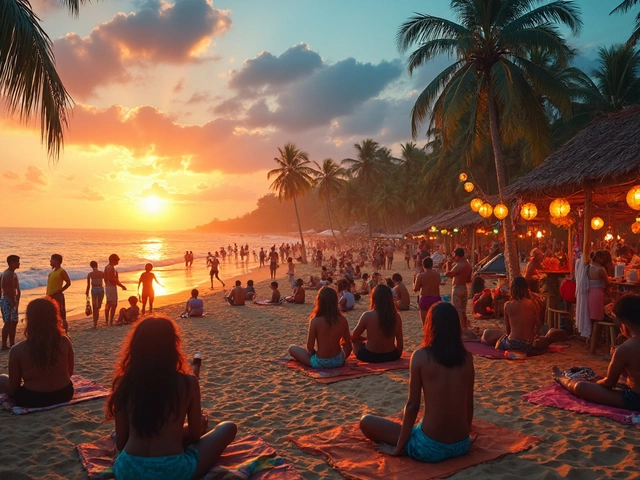If you’ve ever wondered which religious festival gets the biggest crowd in India, nothing comes close to Kumbh Mela. It’s not just big; it’s literally the world’s largest human gathering. Think crowds so massive that you can see them from space—NASA shared satellite images of Kumbh Mela in 2011, showing waves of people by the riverside.
So, why does this festival get so much attention? Apart from its size, Kumbh Mela is all about faith and tradition. Each event draws millions of Hindu pilgrims hoping to catch a sacred dip in the holy rivers, all believing that it washes away their sins. The atmosphere is electric—a heady mix of rituals, color, chanting, and even tent cities popping up overnight.
If you’re looking to dive deep into India’s temple culture or want to see spirituality on a truly epic scale, nothing matches Kumbh Mela. This is the festival that temple tour enthusiasts dream about, but it’s not your average sightseeing trip. There’s a whole playbook for getting around, staying safe, and soaking up as much of the vibe as possible without getting lost in the crowd.
- What Exactly Is Kumbh Mela?
- Where and When Does It Happen?
- What Makes Kumbh Mela So Massive?
- Preparing for Your Kumbh Mela Experience
- Tips for Navigating the Festival
What Exactly Is Kumbh Mela?
Kumbh Mela isn’t your average festival—it's a massive Hindu pilgrimage. Picture this: people from every corner of India (and even from abroad) head to the riverbanks hoping to boost their karma and reset spiritually. What pulls them in? A simple ritual—taking a dip in the holy waters where the “Kumbh” (meaning ‘pot’) supposedly spilled nectar of immortality according to ancient mythology.
The festival is spread over four different spots: Prayagraj (previously Allahabad), Haridwar, Nashik, and Ujjain. Each of these cities sits beside a sacred river—Ganga, Yamuna, Godavari, or Shipra. The highlight is the “shahi snan” or royal bath, when crowds gather for a collective dip, believing it wipes their slate clean of past mistakes.
The Kumbh Mela isn’t an annual thing—it rolls around at each place every 12 years. There’s also something called Ardh Kumbh (every 6 years) and smaller versions called Magh Mela. But it’s the full Kumbh Mela that grabs global attention, and for good reason.
Want to see the kind of numbers we’re talking about? Here’s a quick snapshot:
| Year | Location | Estimated Attendees |
|---|---|---|
| 2013 | Prayagraj | 120 million (over 2 months) |
| 2019 | Prayagraj | 50 million (on single peak day) |
| 2016 | Ujjain | 60 million (total) |
Kumbh Mela is an open-air, pop-up mega city. You’ll find makeshift kitchens, medical tents, security teams, endless rows of tents, and religious leaders (sadhus) leading prayers. The vibe is totally different from most festivals: less about entertainment, more about tradition, faith, and community. For travelers, it’s a front-row seat to living, breathing Hindu spirituality at work.
Where and When Does It Happen?
Kumbh Mela isn’t a regular yearly festival. It only shows up in certain Indian cities, and its timing follows ancient astrological rules. So, you can’t just book tickets any time—missing the window means waiting years for the next shot.
This huge event rotates between four main locations, each by a holy river:
- Prayagraj (Uttar Pradesh): Where the Ganges, Yamuna, and Sarasvati rivers meet.
- Haridwar (Uttarakhand): Alongside the Ganges River.
- Nashik (Maharashtra): By the Godavari River.
- Ujjain (Madhya Pradesh): Near the Shipra River.
The whole idea is linked to Hindu mythology. The festival lands when certain stars and planets line up in a specific way. This only happens every 12 years in each city, so there’s always a big gap between local editions.
To keep things moving, organizers also host smaller events called Ardh Kumbh (every 6 years) and Maha Kumbh (after 144 years), but the main “Kumbh Mela” is the real showstopper.
| City | Main River | Next Kumbh Mela Year |
|---|---|---|
| Prayagraj | Ganges, Yamuna, Sarasvati | 2025 |
| Haridwar | Ganges | 2032 |
| Nashik | Godavari | 2035 |
| Ujjain | Shipra | 2028 |
If you’re into temple tours and want to see the action, keep an eye out for those years. The Kumbh Mela draws folks from every corner of India (and beyond) at just these places and times. Planning ahead is key if you don’t want to miss it—or get stuck in a crowd without a plan.
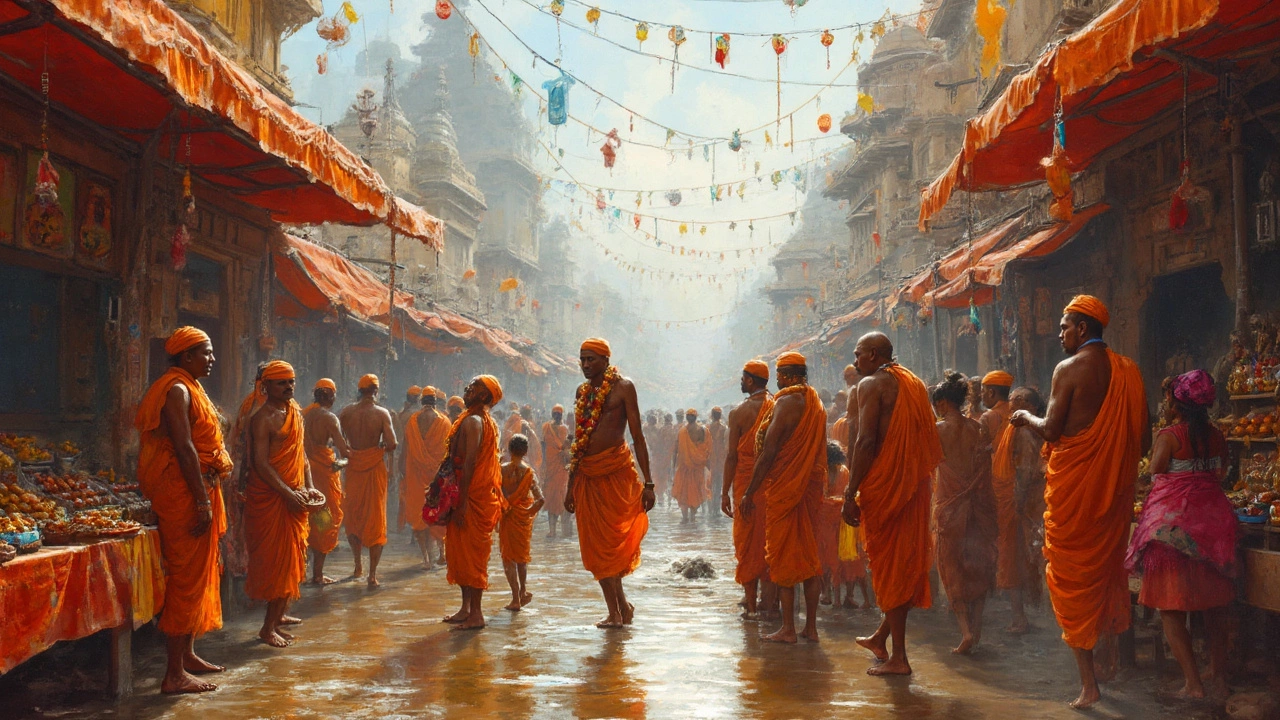
What Makes Kumbh Mela So Massive?
It’s no exaggeration to say that Kumbh Mela is the biggest religious event on the planet. The sheer numbers are mind-blowing. In 2013, for example, around 120 million people attended over 55 days. On the main bathing day, single-day attendance can top 30 million. Nowhere else do you see human movement on this scale.
Why is it so massive? There are a few solid reasons:
- Kumbh Mela is deeply rooted in Hindu belief. Pilgrims come from every corner of India, convinced that bathing at this time washes away lifetimes of bad karma.
- It happens at four rotating sites—Allahabad (now Prayagraj), Haridwar, Nashik, and Ujjain—each by a holy river. These rivers are packed with spiritual significance.
- The timing lines up with unique planetary positions, which only roll around every 12 years per location, adding to the excitement and urgency.
- It isn’t just for hardcore devotees. You get everyone: families, travelers, sadhus, even folks curious to witness history unfolding.
- The government and local folks set up full cities of tents, food stalls, bathing areas, and even temporary hospitals to handle the human flood.
To see just how much the festival has grown, check out this snapshot:
| Year | Location | Estimated Attendance |
|---|---|---|
| 2001 | Allahabad | 70 million |
| 2013 | Allahabad | 120 million |
| 2019 | Prayagraj | 240 million |
The logistics are wild—railways add more trains, roads get expanded, and entire neighborhoods shift to make room. The coordination is like running several cities at once, just for a couple of months.
So, the size comes from faith, tradition, timing, and serious teamwork on the ground. If you want to see humanity gathered for a single spiritual cause, Kumbh Mela is where it all comes together.
Preparing for Your Kumbh Mela Experience
Getting ready for Kumbh Mela is a bit different from packing for your average trip. The crowds are next-level, and the event runs for weeks, so some practical prep can make everything smoother. Let’s break down what actually works when planning a solid trip to the Kumbh Mela.
First, check the official dates and pick your timing carefully. The core bathing days (“Shahi Snan”) draw the largest crowds, sometimes over 30 million people in a single day. If you want the full energy of the experience, come on these days, but if you’re crowd-shy, aim for quieter dates. Booking accommodation in advance is a must. During the 2013 Kumbh Mela, Allahabad's hotels were booked out months ahead, and even simple tent stays got snapped up.
Vaccines and health basics count. With big crowds, basic hygiene and vaccinated protection (like typhoid, hepatitis A, and tetanus) aren't negotiable. Carry some sanitizer, your personal meds, and drink only bottled or filtered water. Hospitals set up field clinics, but you’re better off staying healthy to start with.
Here's what you’ll absolutely need to bring:
- Government-issued photo ID (mandatory for most bookings and checkpoints)
- Copies of travel details and emergency contacts (paper + digital)
- Sturdy shoes (expect mud, dust, and lots of walking)
- Portable phone charger and power bank
- Face mask or scarf for the dust
- Clothing for warm days and chilly nights
Traveling with kids? Keep wristbands with your contact info on your child at all times. My son Rylan kept one on the whole day, and it took away a lot of stress in those sea-of-people moments.
Every Kumbh Mela includes basic infrastructure but nothing like a fancy city. Power, toilets, and Wi-Fi come and go, especially in the vast tented zones. The police and local volunteers are helpful, but keep your valuables minimal—pickpockets do turn up.
Here’s a quick look at what to expect in numbers (from the 2019 Kumbh Mela in Prayagraj):
| Statistic | Figure |
|---|---|
| Pilgrims during main bathing day | ~32 million |
| Temporary toilets installed | ~120,000 |
| Police & security deployed | ~30,000 personnel |
| Medical camps | ~250 sites |
To sum it up: plan your trip around the crowd peaks, lock in a place to sleep, don’t forget health basics, and travel light and practical. Being ready means you can actually enjoy this mind-blowing festival without the usual stress.
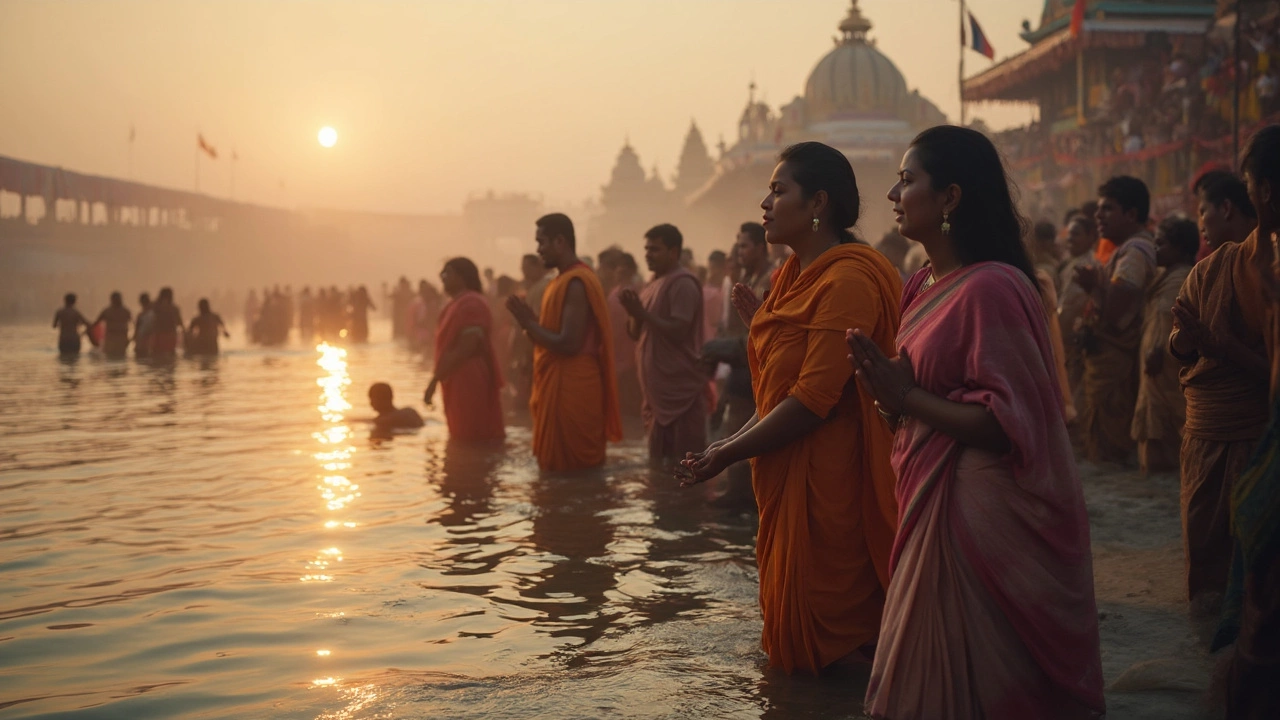
Tips for Navigating the Festival
If you’re heading to Kumbh Mela for the first time, be ready for a wild ride. The crowds are next-level, way past anything you’d see at a concert or sports event. Here’s how you can actually enjoy yourself and not feel overwhelmed.
- Kumbh Mela covers a huge area, so pick a main entry point and stick with it. Most folks enter through Allahabad (Prayagraj), Haridwar, Nashik, or Ujjain, depending on where that year’s Mela is held.
- Go early in the day, especially if you want to take a dip in the river. Main bathing days (Shahi Snan) get crazy packed—millions show up. If possible, pick a day right after or before the peak dates for a calmer experience.
- Bring only what you absolutely need. There are lockers and cloakrooms, but the less you carry, the less you stress. A small backpack with water, snacks, sanitizer, a phone (with extra power), and cash is enough.
- Dress simple and comfortable. Shoes that can handle mud and walking are a must. It gets dusty, sometimes muddy, and you’ll be on your feet for hours.
- Plan your meeting spots. If you’re going with family or friends, decide on clear landmarks. Mobile networks work, but they slow down during peak hours.
- Stick to official routes and signs. There’s security everywhere, but shortcuts through the crowd can get you lost fast.
- Eat at authorized food stalls only. While the temptations are real, nobody wants a stomach bug in such a crowd.
Here’s a quick look at how busy things can get, especially on the main bathing days:
| City | Main Bathing Day Turnout | Total Festival Attendance |
|---|---|---|
| Prayagraj (Allahabad) | 30 million+ | 120 million over 55 days |
| Haridwar | 10 million+ | 50 million+ |
| Nashik | 8 million+ | 30 million+ |
| Ujjain | 7 million+ | 25 million+ |
If you’re traveling with kids like I once did with Rylan, use wristbands with their name and your mobile number on them. Seriously, it makes a huge difference if someone gets separated. Also, don’t leave valuables out—petty theft does happen in crowds this big.
Finally, don’t just rush from one spot to the next. Take some time to watch the rituals, listen to the chants, and soak in the energy of the place. Kumbh Mela is one of those things you’ll never forget—but it’s way more epic when you know how to handle it well.
